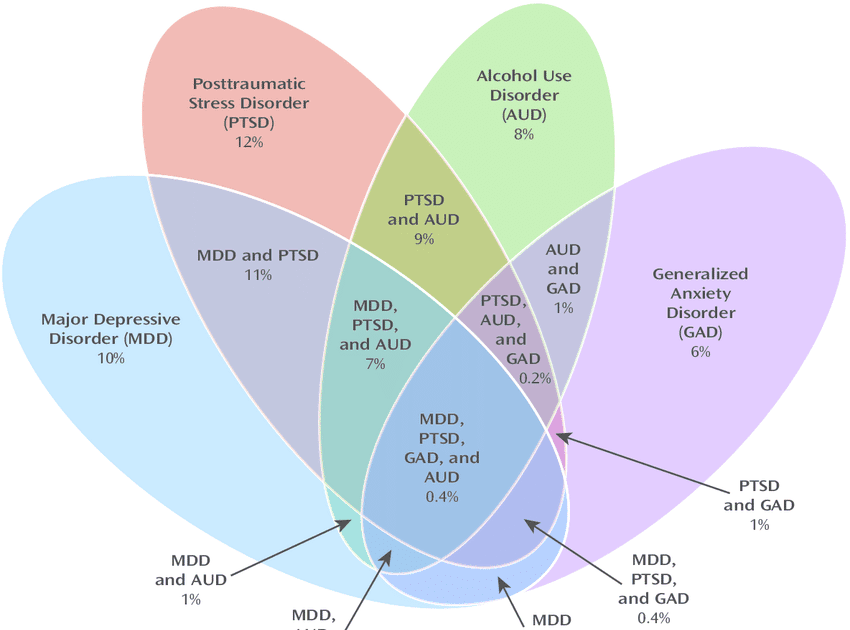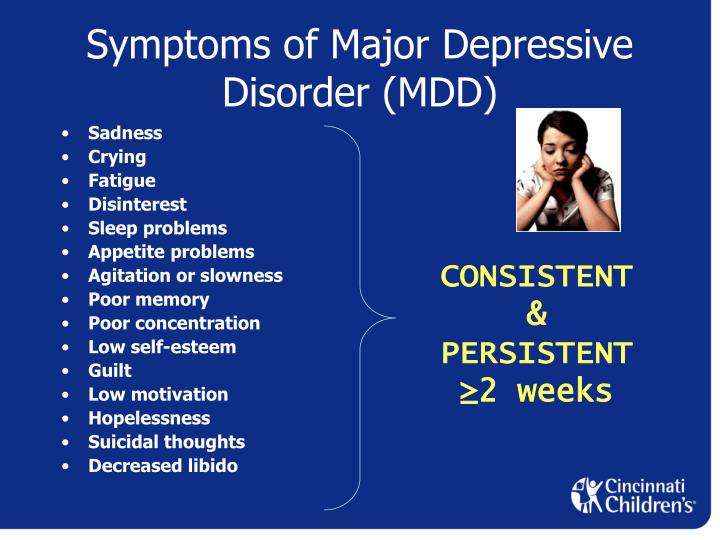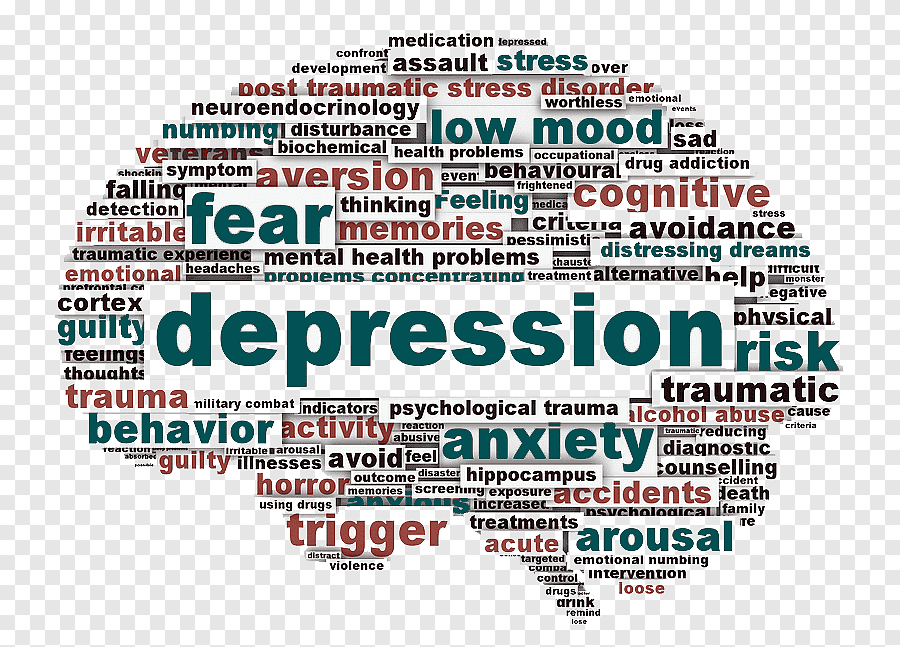Symptoms Of Anxiety And Depression
According to the current Diagnostic and Statistical Manual of Mental Disorders , the standard classification of mental disorders used by mental health professionals in the United States, anxiety and depression can share several common symptoms, including, but not limited to:
- Being easily fatigued
- Sleep disturbance
Other signs that a person may suffer from both anxiety disorder and depression include:
- Constant, irrational fear and worry
- Physical symptoms like rapid heartbeat, headaches, hot flashes, sweating, abdominal pain, and/or difficulty breathing
- Changes in eating, either too much or too little
- Persistent feelings of sadness or worthlessness
- Loss of interest in hobbies and activities
- Inability to relax
- Panic attacks
Peripartum Depression And Postpartum Depression
You may hear this type of depression is referred to as perinatal depression, or major depressive disorder with peripartum onset, peripartum depression or postpartum depression. It occurs during pregnancy or within 4 weeks of childbirth. People may refer to this as postpartum depression, but that term only applies to depression after giving birth. Perinatal depression can occur while a woman is pregnant. Mood changes, anxiety, irritability, and other symptoms are not uncommon after giving birth and often last up to two weeks. PPD symptoms are more severe and longer-lasting.
General Signs And Symptoms
Not everyone with depression will experience the same symptoms. Symptoms can vary in severity, how often they happen, and how long they last.
If you experience some of the following signs and of depression nearly every day for at least 2 weeks, you may be living with depression:
- feeling sad, anxious, or empty
- feeling hopeless, worthless, and pessimistic
- crying a lot
The symptoms of depression can be experienced differently among males, females, teens, and children.
Males may experience symptoms related to their:
- mood, such as anger, aggressiveness, irritability, anxiousness, or restlessness
- emotional well-being, such as feeling empty, sad, or hopeless
- behavior, such as loss of interest, no longer finding pleasure in favorite activities, feeling tired easily, thoughts of suicide, drinking excessively, using drugs, or engaging in high-risk activities
- sexual interest, such as reduced sexual desire or lack of sexual performance
- cognitive abilities, such as inability to concentrate, difficulty completing tasks, or delayed responses during conversations
- sleep patterns, such as insomnia, restless sleep, excessive sleepiness, or not sleeping through the night
- physical well-being, such as fatigue, pains, headache, or digestive problems
Females may experience symptoms related to their:
Children may experience
Common causes include:
You may successfully manage symptoms with one form of treatment, or you may find that a combination of treatments works best.
Read Also: How To Motivate Yourself When Depressed
The Role Of Da In Mdd And Ads
DA is a neurotransmitter in the hypothalamus and pituitary that is a key neurobiological substrate for reward, concentration, motivation, psychomotor speed, and the ability to experience pleasure, which may play a role in the modulation of human emotions . Dopaminergic activity has been demonstrated to be involved in depressive or anxious processing. A strong evidence links reward-related, hedonic, and motivated behaviors with the mesolimbic DA system . Impairment of these functions are all prominent characteristics of MDD. Moreover, immediate bidirectional control of specified midbrain DA neurons modulates multiple independent depressive symptoms caused by chronic stress, suggesting that processes affecting depressive symptoms alter the DA neural encoding of action in the limbic circuitry . Further, poor functioning of DA neurons may cause depressive symptoms, including hopelessness and loss of interest . Patients with MDD showed lower level of DA metabolites in the cerebrospinal fluid compared with healthy controls . Deficiency in DA receptor function may lead to the failure in inhibition from the prefrontal cortex to the amygdala, and induce the over excitability of the amygdala, resulting in the emergence of fear and pathological anxiety.
Effects On The Patients Family And Children

Symptoms of depression and anxiety have consequences not just for the affected individual but also for the persons family. Drs Thase and Manning found the Sequenced Treatment Alternatives to Relieve Depression -Child study,20 which looked at the impact of mothers unremitted depression on their children, particularly meaningful. Effective treatment of women was associated with reduction of symptoms and diagnosis rates in their children in essentially a dose-response relationshipand more persistent depression in the mothers was linked to development of more psychiatric difficulties in their children. Dr Thase commented astutely that people who might be ambivalent about pursuing treatment for depression need look no further than the well-being of their children, because it is directly dependent on their own well-being.
Read Also: Does Medicare Cover Tms Therapy For Depression
Recommended Reading: Can You Still Get Postpartum Depression After A Miscarriage
Anxiety Symptoms Vs Depression Symptoms
The symptoms of anxiety largely differ from the symptoms of depression. But both can have physical and emotional symptoms.
Anxiety symptoms can include:
If a doctor prescribes any sort of medication, its important to take the medication as instructed. It can be dangerous to suddenly stop taking it or attempt to wean yourself off without professional supervision. If you experience side effects, you can let a doctor know.
What Are The Causes Of Depression
Genetic causes of depression
First-degree relatives of depressed individuals are about three times as likely to develop depression
External stressors causing depression
- Major life changes divorce, loss of employment, etc.
Risk-factor interactions that cause depression
The relationship between genetic vulnerability, environmental stressors and brain structural abnormalities are risk factor interactions in the development of depression.
Neuroendocrine abnormalities and neurodegenerative diseases
Abnormalities of the neurotransmitter systems may cause depression.Neurodegenerative diseases , stroke, multiple sclerosis, seizure disorders, cancer and chronic pain have been associated with higher rates of depression
Vascular depression
Medical problems that affect blood flow to the brain may also trigger depression:
- Patients experience a higher incidence of depression following a stroke
- Higher prevalence of ischemic brain changes exist in older adults with depression
- A strong association exists between depression and heart disease as well as depression and diabetes
- Higher rates of depression exist among patients with vascular dementia
- Mood instability
Recommended Reading: Eye Movement Therapy For Depression
How Does One Diagnoses And Treat Major Depressive Disorder
A professional diagnosis is necessary to really know that you are dealing with Major Depressive Disorder, and this is something that can happen with a routine physical exam and a quick check with a mental health professional.
The overwhelming majority of people are going to choose to treat this condition with antidepressants or psychotherapy, although a combination of lifestyle adjustments and light medication has also proven to be incredibly effective.
Screening Tools For Clinical Settings
Several easy-to-administer, well-validated, and sensitive scales are available for measuring depressive and anxious symptoms .
WHO-5. The 5-item World Health Organization Well-Being Index is a short rating scale measuring subjective well-being. The items consist of 5 positively phrased statements and are rated on a 6-point Likert scale based on the proportion of time, over the last 2 weeks, when the respondent would agree with the statement. The WHO-5 has good validity as a depression screening measure.29 Drs Trivedi and Manning agreed that this scale was a meaningful assessment in clinical practice, particularly because of its focus on elements important to patient functioning such as energy, restfulness, and purposefulness.
PHQ-9. The Primary Care Evaluation of Mental Disorders 9-item Patient Health Questionnaire 30 is a self-rated depression measure that focuses exclusively on DSM-based symptoms.30 The frequency of 9 symptoms is rated on a scale of 0 to 3: not at all, several days, more than half the days, and nearly every day, respectively, in the last 2 weeks. A follow-up question inquires about the patients functioning. Katzelnick et al31 demonstrated that the PHQ-9 allowed clinicians to successfully determine rates of response and remission of depressive symptoms at 12 and 24 weeks. Dr Manning mentioned that one advantage of the PHQ-9 is that it allows for ongoing inquiry about thoughts of death or distress.
You May Like: How To Tell People You Are Depressed
What Causes Persistent Depressive Disorder
Scientists dont fully understand what causes PDD. But it might be related to low levels of serotonin. Serotonin is a natural hormone that controls our emotions and feelings of well-being. It also influences other body functions.
PDD may get triggered by a traumatic event in life. Examples include losing a job, having a loved one die, experiencing a crime or going through a breakup.
What Exactly Is The Major Depressive Disorder
According to the National Institute of Mental Health, close to 7% of the US population over the age of 18 is currently dealing with Major Depressive Disorder and many of them are struggling with this condition without even knowing that they are!
The kind of disease that manifests between the ages of 25 and 30, women, those living in low-income situations, and those with a family medical history of depression are usually the hardest hit.
Essentially a condition that erodes away at your ability to empathize with your fellow people, youll find it deep sadness and uninterested permeates pretty much every level of your life and that activity that you used to enjoy are now essentially meaningless.
It can become an incredibly insidious condition, essentially destroying your ability to get excited or really enjoy nearly anything below the surface level. Thankfully, though, this condition is not permanent and can effectively combat it.
Recommended Reading: How To Heal Postpartum Depression
How Is Depression Syndrome Treated
Depression can be serious, but its also treatable. Treatment for depression includes:
- Self-help: Regular exercise, getting enough sleep, and spending time with people you care about can improve depression symptoms.
- Counseling: Counseling or psychotherapy is talking with a mental health professional. Your counselor helps you address your problems and develop coping skills. Sometimes brief therapy is all you need. Other people continue therapy longer.
- Alternative medicine: People with mild depression or ongoing symptoms can improve their well-being with complementary therapy. Therapy may include massage, acupuncture, hypnosis and biofeedback.
- Medication: Prescription medicine called antidepressants can help change brain chemistry that causes depression. Antidepressants can take a few weeks to have an effect. Some antidepressants have side effects, which often improve with time. If they dont, talk to your provider. A different medications may work better for you.
- Brain stimulation therapy: Brain stimulation therapy can help people who have severe depression or depression with psychosis. Types of brain stimulation therapy include electroconvulsive therapy , transcranial magnetic stimulation and vagus nerve stimulation .
Major Depressive Disorder Vs Depression

- Posted on August 1, 2022
We all feel sad sometimes. Does it mean that we have depression or major repression disorder? Depression is a mood disorder that causes a persistent feeling of sadness and loss of interest. In plain English, depression is a mood disorder that causes a persistent feeling of depressed mood or sadness and the often profound loss of interest in things that usually bring you pleasure. Depression affects how you feel, think, and behave and can interfere with your ability to function and carry on with daily life. Depression is a common and serious medical illness. The risk of clinical depression is often higher in individuals with drug and alcohol addiction, but it can be effectively treated.
Don’t Miss: How Do Ssris Treat Depression
Whats The Difference Between Depression And Anxiety
Anxiety and depression are distinct mental health disorders. Each has its own set of symptoms.
For example, someone with anxiety may experience excessive fear or worry, while someone with depression may experience persistent feelings of hopelessness.
However, they are often interconnected. Someone with depression can experience anxiety symptoms as part of their mood disorder, and someone with a persistent anxiety disorder can develop depression over time.
Basal And Innate Inflammatory Markers
Basal inflammatory markers included C-reactive protein , interleukin -6 and tumor necrosis factor -. Fasting blood samples were obtained by laboratory staff and kept frozen at 80°C. High-sensitivity plasma CRP levels were measured in duplicate by an in-house enzyme-linked immunosorbent assay based on purified protein and polyclonal anti-CRP antibodies . Plasma IL-6 was measured in duplicate by a high-sensitivity ELISA , and TNF- was assayed in duplicate using a high-sensitivity solid phase ELISA . Intra- and inter-assay coefficients of variation were 5% and 10% for CRP, 8% and 12% for IL-6, and 10% and 15% for TNF-. To obtain normal distributions, the values of CRP, IL-6 and TNF- were ln-transformed. An overall measure of basal inflammation indicative of more systemic inflammation was created by calculating a basal inflammatory index as the standardized sum of all three standardized ln-transformed basal markers.
You May Like: Free Online Help For Depression
Previous Ways Of Recognizing Anxious Distress
The term anxious depression has long been used to describe the emergence of anxiety in the setting of a depressive episode, and synthesis of research findings has been complicated by heterogeneous definitions of anxious depression. Diagnosis in research settings has typically been based on a DSM or ICD diagnosis of MDD presenting with subthreshold anxiety symptoms measured using a variety of tools and score cutoffs,6 such as the Hamilton Depression Rating Scale anxiety/somatization factor , the Hamilton Anxiety Rating Scale total score, or a mix of items from scales such as the Montgomery-Asberg Depression Rating Scale and the Inventory for Depressive Symptomatology.7 Dr Manning said that he does not perceive a meaningful difference between previous conceptions of anxious depression and what is captured by the anxious distress specifiertherefore, as was true previously, best practices in the clinical setting include effective screening and tracking of anxiety symptoms in depressed patients. Dr Thase felt that the specifier represents a positive change in the nomenclature in that it denotes patients who tend to have poorer outcomes. The rating scale included within the specifier allows clinicians to codify the extent of the patients anxiety as opposed to simply noting the presence of anxiety.
What Are The Symptoms Of Recurrent Depressive Disorder
Symptoms of recurrent depressive disorder are similar to those of any type of depression except that the individual will be free from symptoms for weeks or even years at a time before experiencing another episode.
Symptoms include the following:4
- persistent feelings of sadness or emptiness
- loss of interest in activities
- difficulty concentrating or making decisions
- irritability or anger
- unexplained physical pains or gastrointestinal disturbances
- suicidal thoughts or attempts
The degree to which these symptoms affect an individuals ability to function determines if an episode is considered to be mild, moderate, or severe. For example, a mild episode may be irritating and annoying, whereas a severe episode may prevent a person from engaging in daily activities. In severe cases, psychosis may or may not be present.
It is important to note that with each subsequent depressive episode, an individual has an increased risk of developing suicidal thoughts or of attempting suicide.5
Don’t Miss: How Is Depression Different From Sadness
Risk Factors For Mixed Anxiety
- You have a family history of mental health disorders and/or substance addictions.
- You live in poverty.
- You lack social or familial support.
- You have a serious and/or chronic illness.
- You have a dependent and/or pessimistic personality.
- You have low self-esteem.
- You experienced a childhood trauma.
- You are under a lot of stress.
Take Care Of Yourself
You can also improve symptoms of depression by taking care of yourself. This includes getting plenty of sleep, eating a healthy diet, avoiding negative people, and participating in enjoyable activities.
Sometimes depression doesnt respond to medication. Your healthcare professional may recommend other treatment options if your symptoms dont improve.
These options include electroconvulsive therapy or repetitive transcranial magnetic stimulation to treat depression and improve your mood.
Read Also: What Happens To Your Body When You Are Depressed
Enhancing Healthcare Team Outcomes
An interdisciplinary approach is essential for the effective and successful treatment of MDD. Primary care physicians and psychiatrists, along with nurses, therapists, social workers, and case managers, form an integral part of these collaborated services. In the majority of cases, PCPs are the first providers to whom individuals with MDD present mostly with somatic complaints. Depression screening in primary care settings is very imperative. The regular screening of the patients using depression rating scales such as PHQ-9 can be very helpful in the early diagnosis and intervention, thus improving the overall outcome of MDD. Psychoeducation plays a significant role in improving patient compliance and medication adherence. Recent evidence also supports that lifestyle modification, including moderate exercises, can help to improve mild-to-moderate depression. Suicide screening at each psychiatric visit can be helpful to lower suicide incidence. Since patients with MDD are at increased risk of suicide, close monitoring, and follow up by mental health workers becomes necessary to ensure safety and compliance with mental health treatment. The involvement of families can further add to a better outcome of the overall mental health treatment. Meta-analyses of randomized trials have shown that depression outcomes are superior when using collaborative care as compared with usual care.
Recommended Reading: What Happens To Your Body When You Are Depressed
Ways To Identify The Conditions

If you are experiencing signs and symptoms of anxiety and depression, one place to start is to speak with your primary care doctor. They can do an initial screening and may look for medical conditions that could be contributing to your symptoms. You will likely then be referred to a mental health professional for an official clinical diagnosis.
The mental health professional will use the standard reference manual for diagnosing recognized mental illnesses in the United States, the Diagnostic and Statistical Manual of Mental Disorders, 5th Edition .
The DSM-5 diagnostic criteria for depression and each anxiety disorder are different. A diagnosis might be harder to make when anxiety and depression overlap.
You May Like: How To Manage Loneliness And Depression